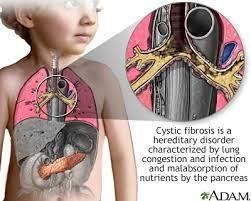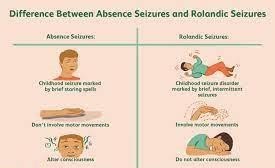RN > Exit Exams
Exam Review
RN Comprehensive Predictor
Total Questions : 180
Showing 10 questions, Sign in for moreA nurse is caring for a child who has cystic fibrosis and requires postural drainage. Which of the following actions should the nurse take?

Explanation
A. Incorrect. Postural drainage is usually performed multiple times a day, usually three to four times, to effectively mobilize respiratory secretions.
B. Incorrect. Percussions are typically performed using cupped hands to create vibrations. Holding the hand flat would not produce the desired effect.
C. Correct. Administering a bronchodilator after postural drainage helps open the airways, facilitating easier breathing and the removal of mucus.
D. Incorrect. Postural drainage is commonly performed before meals to prevent the risk of vomiting and aspiration.
A nurse is developing a plan of care for a newborn whose mother tested positive for heroin during pregnancy. The newborn is experiencing neonatal abstinence syndrome. Which of the following actions should the nurse include in the plan?
Explanation
A. Incorrect. While maintaining eye contact during feedings is generally beneficial for bonding, it's not a specific intervention for managing neonatal abstinence syndrome.
B. Incorrect. Swaddling a newborn with extended legs might be uncomfortable, as newborns with neonatal abstinence syndrome can experience increased muscle tone and jitteriness.
C. Correct. Newborns with neonatal abstinence syndrome can be hypersensitive to stimuli, including noise. Minimizing noise in the environment helps reduce stress and overstimulation.
D. Incorrect. Naloxone is not typically administered to newborns with neonatal abstinence syndrome. The syndrome is managed through supportive care, gradually reducing exposure to the substance.
A nurse is admitting a client to a medical-surgical unit. When performing medication reconciliation for the client, which of the following actions should the nurse take?
Explanation
A. Incorrect. While adverse effects are important to consider, the primary purpose of medication reconciliation is to ensure accurate and up-to-date medication information.
B. Incorrect. Nutritional supplements and over-the-counter medications should be included in the medication reconciliation process to provide a comprehensive overview of the client's medication regimen.
C. Incorrect. The nurse is responsible for accurately reconciling the client's medications during the admission process. Encouraging the client to create a list later may lead to inaccuracies.
D. Correct. Comparing new prescriptions with the client's reported medication list helps identify any discrepancies or potential interactions, ensuring safe and effective medication administration.
A school nurse is teaching a parent about absence seizures. Which of the following information should the nurse include?

Explanation
A. Incorrect. Absence seizures typically do not have an aura. They are characterized by a sudden and brief loss of awareness without warning.
B. Correct. Absence seizures often involve a brief period of staring and decreased responsiveness. They can indeed be mistaken for daydreaming, as they are not as dramatic as other types of seizures.
C. Incorrect. Absence seizures are usually very brief, lasting only a few seconds (often less than 10 seconds), rather than 30 to 60 seconds.
D. Incorrect. Absence seizures have a sudden and abrupt onset, not a gradual one. They occur without warning and without a preceding aura.
A nurse is planning care for an older adult client who has dementia. Which of the following interventions should the nurse include in the plan of care? (Select all that apply.)
Explanation
A. Correct. Reinforcing orientation to time, place, and person helps ground the client in reality, even if their memory is impaired.
B. Correct. Allowing the client to choose activities empowers them and helps maintain a sense of control.
C. Correct. Providing one simple direction at a time helps prevent confusion and frustration for clients with dementia.
D. Correct. Establishing eye contact while communicating can enhance the client's focus and understanding.
E. Incorrect. It's generally not effective to try to refute a client's delusions using logic.
Redirecting or validating their feelings might be more appropriate.
A nurse is providing teaching to a client who is at 14 weeks of gestation about findings to report to the provider. Which of the following findings should the nurse include in the teaching?
Explanation
A. Incorrect. Bleeding gums can be a common finding during pregnancy due to hormonal changes, but they are not typically considered a serious concern unless severe.
B. Correct. Faintness upon rising can be a sign of orthostatic hypotension, which can be a concern during pregnancy and should be reported to the provider.
C. Incorrect. Mild swelling of the face can also occur during pregnancy, but significant or sudden swelling might be a sign of a condition like preeclampsia.
D. Incorrect. Urinary frequency is a common symptom of pregnancy due to increased pressure on the bladder from the growing uterus.
A charge nurse is delegating care for a group of clients. Which of the following tasks should the charge nurse assign to a licensed practical nurse?
Explanation
A. Correct. Performing a sterile dressing change falls within the scope of practice for a licensed practical nurse (LPN).
B. Incorrect. Discharge teaching often involves complex information and considerations, which are typically better suited for a registered nurse.
C. Incorrect. An admission assessment requires comprehensive assessment skills that are typically performed by registered nurses.
D. Incorrect. Completing assessments related to complex neurological changes, such as the Glasgow Coma Scale for a stroke, is typically within the scope of a registered nurse.
A nurse is caring for a client who has a vented NG tube set to low intermittent suction and has vomited.
Which of the following actions should the nurse perform first?
Explanation
A. Correct. Providing oral hygiene care is the first priority after a client has vomited to prevent complications and ensure their comfort.
B. Incorrect. While administering an antiemetic medication might be considered, providing oral hygiene care to the client is the immediate priority.
C. Incorrect. Replacing the NG tube is not typically the first action to take after a client vomits. Addressing oral hygiene and assessing the client's condition comes first.
D. Incorrect. Evaluating the functioning of the suction device is important, but addressing the client's immediate comfort and preventing complications take precedence.
A nurse is obtaining a client's manual blood pressure and is having difficulty auscultating sounds. Which of the following actions should the nurse take?
Explanation
A. Incorrect. Avoiding the issue by scheduling the nurses to have fewer shifts together might not address the underlying conflict and could lead to resentment.
B. Incorrect. To auscultate blood pressure accurately, it's essential to follow proper positioning and technique, which typically involves having the client's arm at heart level. Placing the arm above heart level can lead to falsely lower blood pressure readings.
C. Incorrect. While promising more equitable assignments is important, addressing the conflict directly and encouraging collaboration is a more proactive approach.
D. Using the palpatory method, the nurse can feel for the radial pulse while slowly deflating the blood pressure cuff. This helps estimate the systolic blood pressure when Korotkoff sounds are challenging to hear. It provides a rough estimate until clear sounds can be heard and ensures accurate blood pressure measurement.
A nurse is providing discharge teaching about home care of a surgical incision to a client who speaks a different language from the nurse. The nurse is communicating with the client using an interpreter. Which of the following actions should the nurse take?
Explanation
A. Incorrect. While some gestures can be helpful in communication, they might not always convey complex medical information accurately.
B. Incorrect. Speaking slowly might not necessarily enhance understanding, especially if the client's primary language is different from the nurse's.
C. Correct. When using an interpreter, the nurse should address the client directly and speak as if they are having a direct conversation with the client.
D. Incorrect. Pausing in the middle of sentences can disrupt the flow of communication and might not facilitate understanding.
Sign Up or Login to view all the 180 Questions on this Exam
Join over 100,000+ nursing students using Nursingprepexams’s science-backend flashcards, practice tests and expert solutions to improve their grades and reach their goals.
Sign Up Now

